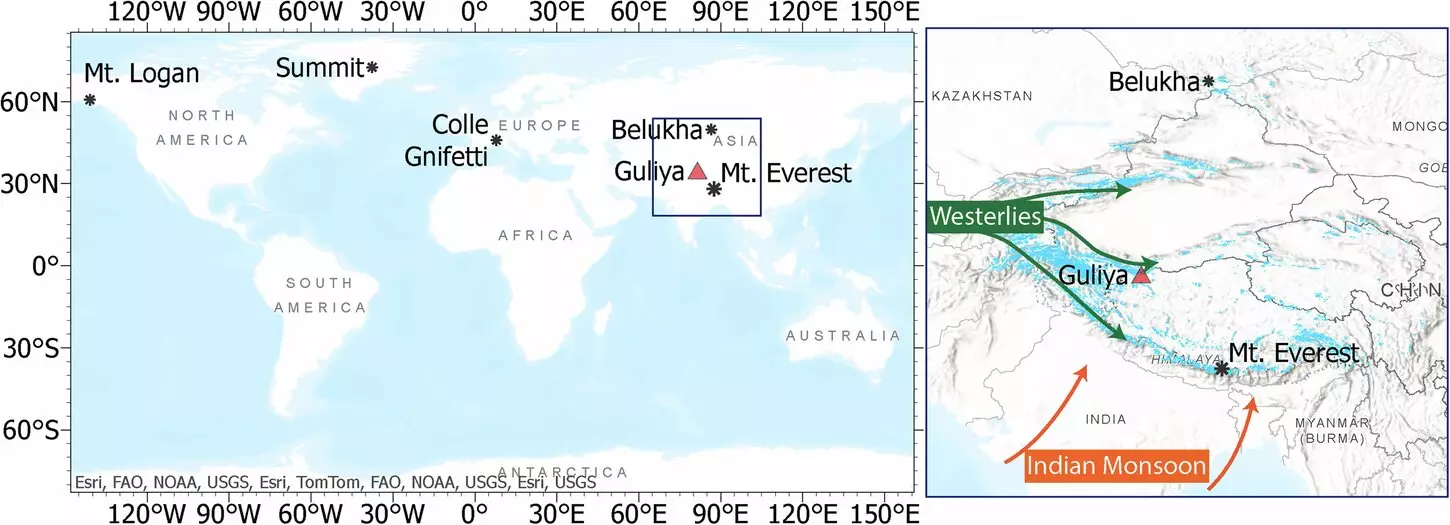Recent research led by a collaborative team from Texas A&M University highlights a troubling intersection between human activities and even the most remote ecosystems on Earth. Using advanced analytical techniques, the scientists explored the unsettling presence of lead contaminants in a glacier on the Tibetan Plateau, marking a significant stride in understanding the environmental implications of our actions. The work, published in Communications Earth & Environment, opens up avenues for further inquiry into how anthropogenic activities influence global ecological health.
Often referred to as the “Roof of the World,” the Tibetan Plateau is not only the highest plateau on the planet but is also an ecological marvel. Spanning across southwestern China and in proximity to the majestic Himalayas, this vast region is approximately four times the size of Texas. The geographical characteristics of the plateau, including its altitude and unique climatic conditions, offer invaluable insights into historical climate data and how regions have evolved over thousands of years.
The focus of this research was the Guliya Ice Cap, a critical site within the plateau. The team, spearheaded by Dr. Roxana Sierra-Hernandez from The Ohio State University, uncovered that significant levels of lead pollution began infiltrating this pristine area in 1974. Their analysis revealed that from the year 2000 to 2007, the contamination peaked alarmingly. By meticulously studying lead isotope ratios at Texas A&M’s Williams Radiogenic Isotope Facility, the researchers traced the origins of this pollution back to leaded gasoline emissions originating from China.
Dr. Franco Marcantonio, a prominent member of the research team and an expert in geology, emphasized the seriousness of their findings, stating, “Lead is a neurotoxin, and its presence in remote areas like the Tibetan Plateau shows the vast reach of human impact on the environment.” This statement encapsulates the crux of the research; human activities, even when removed by distance, can have profound effects on remote ecosystems.
The researchers employed a methodical approach to identify the contamination’s timeline, leveraging ice core samples that dated back as far as 36,000 years. These ice cores served as chronological records, showing how lead levels have changed over millennia, particularly illustrating the stark contrast between pre-industrial and modern contamination levels. This comparative historical analysis not only sheds light on the evolution of pollution levels but also provides a narrative about our changing environment and its interaction with human behavior.
Analytical techniques such as measuring isotopic ratios were instrumental in providing a clearer picture of lead’s origins, revealing how fuel emissions from the late 20th century played a pivotal role in infusing lead into previously untouched ecosystems. Such insights foster a greater understanding of atmospheric circulation and depict how local actions can transcend borders to impact global environmental health.
The implications of lead pollution extend beyond just environmental degradation; they also pose serious health risks to humans and wildlife alike. The research underscores the urgent need to mitigate pollution in delicate ecosystems, particularly those that serve as indicators of broader environmental changes. The presence of neurotoxins like lead in remote settings not only challenges assumptions about the containment of human impact but also calls for a reassessment of pollution controls in industries worldwide.
As Dr. Marcantonio continues to explore the implications of these findings, he aims to broaden the scope of his research to include how lead and other contaminants traverse various environmental platforms, including oceans and the human body. His work invites further examination of contamination pathways, elucidating how these toxic metals interact within different environments. Understanding these dynamics can help inform better strategies to reduce pollution and safeguard both ecological and human health.
The findings from the research on the Tibetan glacier serve as a wake-up call regarding the extent of human environmental impact. By examining the sources and implications of lead contamination, this collaborative effort reveals the inextricable link between human industry and the health of our planet’s most resilient ecosystems. As we strive to preserve the natural world, it becomes imperative to stay informed and considerate of our actions and their far-reaching consequences. Through continued research and collaborative efforts, there is hope for a future where even the most remote regions can remain untouched by the blights of pollution.

